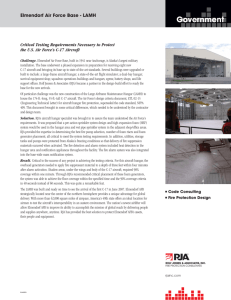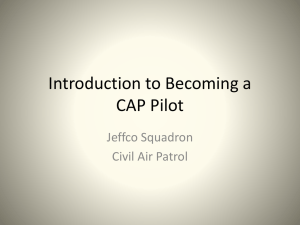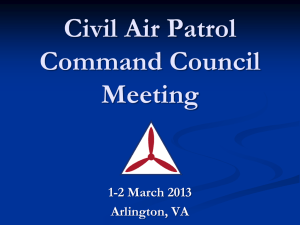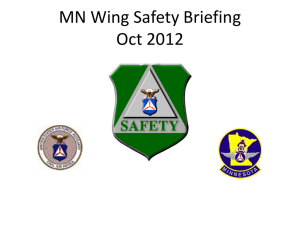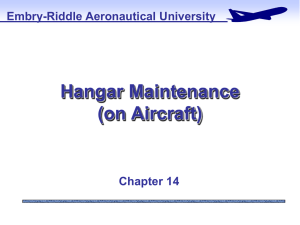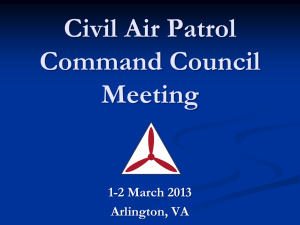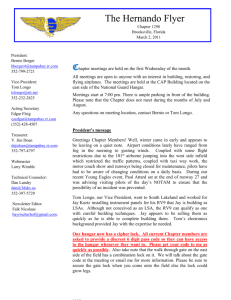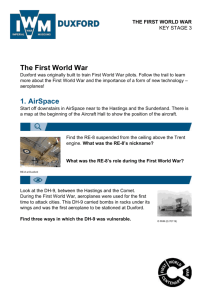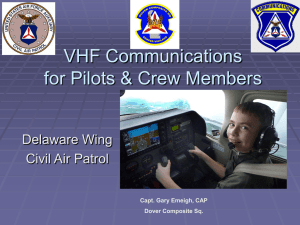Hangar Rash - CAP Members
advertisement
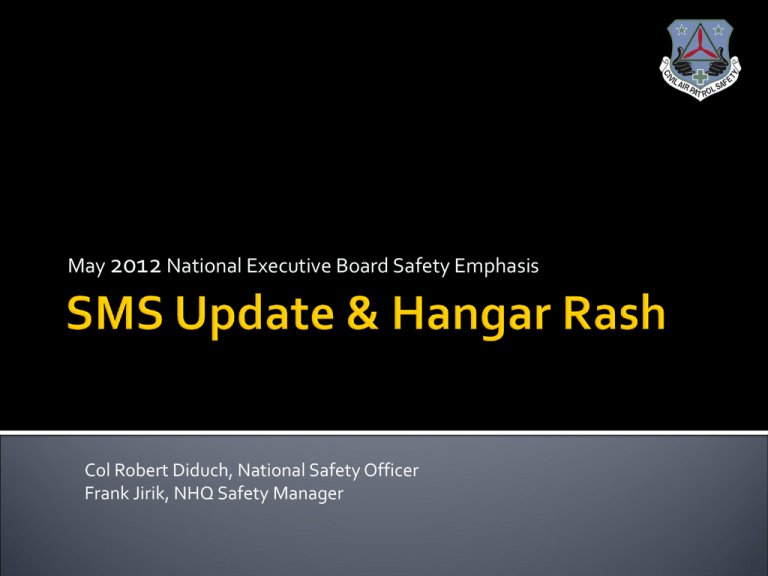
May 2012 National Executive Board Safety Emphasis Col Robert Diduch, National Safety Officer Frank Jirik, NHQ Safety Manager SMS Features SMS Implementation Plan Hangar Rash Defined CAP Hangar Rash Statistics, FY11 Summary Analysis – Who, What, When, Why, Again Really? Prevention Recommendations Gen Carr - Conference Call Intervention Closing Comments and Questions Final beta testing ongoing now GLR – Col Karton and Michigan Wing PCR – Col Myrick and Nevada Wing ALL Directors of Safety (Region / Wing) How to file a mishap - online training by 14 May 2012 How to manage mishaps - online training by 21 May 2012 Implementation of CAP SMS – 29 May 2012 Webinar training to be available after 1 June 2012 Questions? May 2012 National Executive Board Safety Emphasis Hangar rash rates per 100,000 flying hours – FY11 30.00 28.16 25.00 25.77 23.58 21.62 20.00 18.99 15.00 15.12 10.00 8.62 5.00 0.00 0.00 SER PCR GLR NCR SWR MER NER RMR Causal Links to Mishap Occurrences 14 12 10 8 6 4 2 0 Situational Awareness Insufficient Crew Improper / Hangar Door Non-Use of Not Open Tools Door Track Poor Lighting Obstacle Mission Profile at Occurrence 7 6 5 4 3 2 1 0 •Establish mandatory aircraft parking guidelines •Should include: •Door markings •Floor markings •Aircraft type - hangar capability markings •Aircraft circle of safety criteria •Storage of article standards •Outdoor parking standards •Should all parking locations meet national standard for aircraft parking? •Should alternative parking guidelines be reviewed and approved by Region Safety with an approved letter of alternate procedure on file with NHQ Safety when the National Standard cannot be met? These could be maintained online. •Implement “Sterile Hangar Program” •Establish minimum crew ground handling guidelines •Consider restricting aircraft movement of aircraft to >1 person •Involve aircraft maintenance officer, consider cadet crew chief program •Protect Civil Air Patrol aircraft •Require safety tubes and placards be added to all aircraft in hangars •Consider padding door jams and structural support columns in hangars •Low cost, high visibility, protects the surface of aircraft and reduces exposure to member injuries •Consider alternate training protocol option for aircrew proficiency and mission training •Flight operations officer can create missions and coordinate crews for proficiency and encourage crew involvement •Training missions would be scheduled by Flight Operations, not by crew personal schedules •Creates sense of “real” mission •Every flight would have specific objectives •Flights without a well-defined training plan have the highest risk exposure •Consider FBO parking where available. Transference of responsibility to an FBO by utilizing parking and hangar services allows CAP crews to focus on missions and training profiles while trained and experienced professionals move CAP aircraft into a ready-state. •Implement a ground crew training program similar to Part 135 or Part 121 Operations. Program would include, but is not limited to: •Aircraft ground handling video •Marshalling •Towbar connection •Hands on aircraft movement •Protective cover installation and removal •Tie downs •Parking selection •Hangar door operations •Aircraft security The National Commander wants to implement hangar rash conference calls. It is recommended these calls occur within 48-72 hours of mishap notification filing. Mandatory Participation: CAP CC / DO / SE Region CC / SE Wing CC / SE NHQ DO / SE Member(s) in mishap The call is to be a positive opportunity for the National CC to address the importance of doing things correctly and handling CAP assets with the best care and respect. All parties will be able to make recommendations to identify the contributing factors (links in the mishap chain), make corrective action recommendations, starting with the members involved. Membership will most often solve their own problems and can provide corrective action based on their new experience to be able to prevent reoccurrence. Bottom up action with top down support will change behaviors in CAP. Conference call bridge numbers will be predetermined for all to dial-in on at a time specified by CAPs senior leaders. CAP or NHQ SE will take roll & brief the mishap. CAP CC will moderate the review process and chair the meeting. CAP or NHQ SE will document results in mishap management database. Safety is a commanders program. This emphasis will send a message of importance to all CAP members. While this may be designed and expected for hangar rash mishaps, it may be feasible to expand this into a review of other mishaps to support a consistent message across the nation for all of CAP’s senior leaders. Consistency will breed success. Questions?
